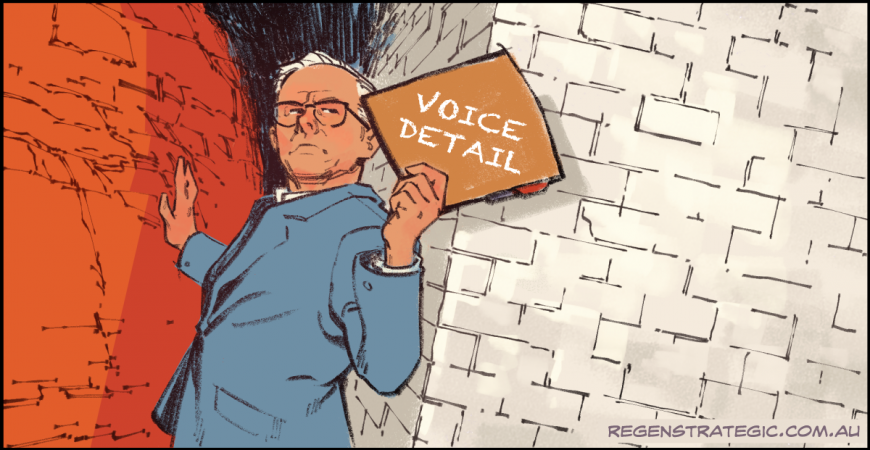There are two types of people asking for more detail in the leadup to the referendum on a First Nations Voice being enshrined in Australia’s constitution.
The first type are generally supportive of the idea, but are genuine in their desire for more information about what they are supporting, before voting.
The second will never support the Voice, and are campaigning about a lack of detail in the hope of getting the generally supportive to vote no.
This latter group also points to any dissenting views among First Nations people, as reason to ignore the 250 Indigenous leaders who signed the Uluru Statement from the Heart, which recommended the Voice as a priority.
While he is probably on the money in identifying this latter group as seeking to perpetuate the culture wars, Prime Minister Anthony Albanese finds himself between a rock and a hard place on how much detail he provides about his preferred model.
If he is light on detail, he plays into the hands of the no campaign. But, every bit of detail he releases widens the opportunity for dissent, which the no campaign will also capitalise on.
The final Referendum Council report delivered to then PM Malcolm Turnbull, said that the structure and functions of the Voice should be determined by the Parliament. Albanese points to the work of the previous coalition government, as well as a 2021 report by Marcia Langton and Tom Calma as providing direction on what the Voice might ultimately look like.
But effectively communicating enough detail ahead of the referendum to satisfy the generally supportive may be critical to getting the Voice over the line.
 ReGen Strategic
ReGen Strategic